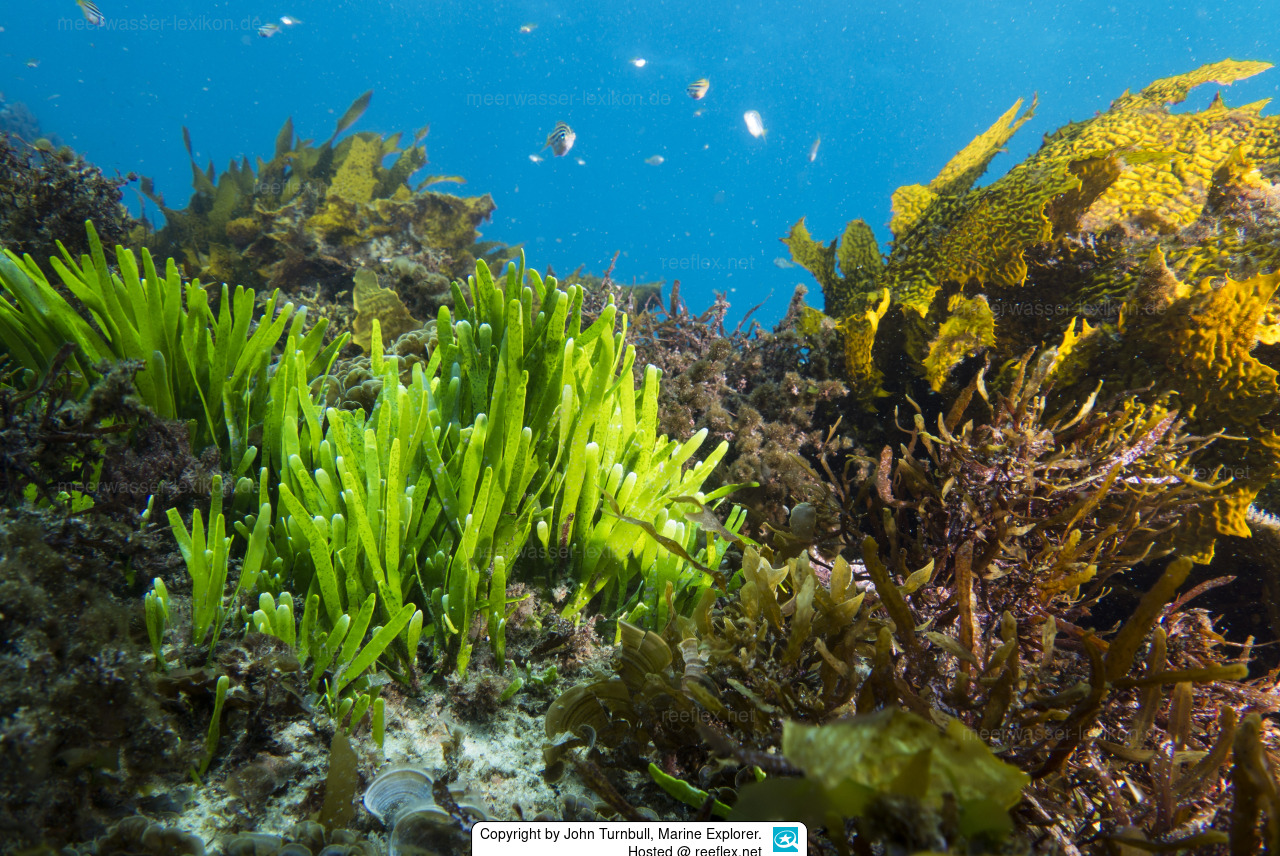Info
Caulerpa filiformis (Suhr) Hering, 1841
Caulerpa are green algae from the Caulerpaceae family. They are unusual because they consist of only one cell with many nuclei, making them one of the largest single cells in the world.
One species in the Mediterranean can have a stolon more than 3 meters long with up to 200 fronds. This species can be invasive from time to time.
In reference to the creeping habit of its stalks, the name means "standing creep", from the ancient Greek kaul ("stalk") and herpes ("creeping").
The alga is considered "native" in Australia, i.e. an indigenous species that has so far only been known from New South Wales, on the east coast of Australia, where the alga has spread "almost unnoticed" by 500 km.
Caulerpa filiformis likes to settle on stones in sandy soils and spreads by stolons (runners).
It is known that this green alga is able to protect itself against predators with a bitter-tasting chemical substance, but it is worth noting that the algae-eating marble fish Aplodactylus lophodon was significantly more numerous in the vicinity of seagrass beds with large populations of Caulerpa filiformis than in zones without Caulerpa filiformis.
Referring to its thalli's crawling habit, the name means 'stem (that) creeps', from the Ancient Greek kaulos ( ‘stalk’) and herpo (‘to creep’).
Synonymised names:
Amphibolis filiformis Suhr, 1834 (synonym)
Caulerpa flagelliformis var. ligulata Weber Bosse, 1898 (synonym)
Caulerpa ligulata Harvey ex J.Agardh, 1873 (synonym)
Himandactylius filiformis (Suhr) Trevisan, 1849 (synonym)
Direct children (2):
Variety Caulerpa filiformis var. latior K.Hering, 1846
Variety Caulerpa filiformis var. palmata Hering, 1846
Caulerpa are green algae from the Caulerpaceae family. They are unusual because they consist of only one cell with many nuclei, making them one of the largest single cells in the world.
One species in the Mediterranean can have a stolon more than 3 meters long with up to 200 fronds. This species can be invasive from time to time.
In reference to the creeping habit of its stalks, the name means "standing creep", from the ancient Greek kaul ("stalk") and herpes ("creeping").
The alga is considered "native" in Australia, i.e. an indigenous species that has so far only been known from New South Wales, on the east coast of Australia, where the alga has spread "almost unnoticed" by 500 km.
Caulerpa filiformis likes to settle on stones in sandy soils and spreads by stolons (runners).
It is known that this green alga is able to protect itself against predators with a bitter-tasting chemical substance, but it is worth noting that the algae-eating marble fish Aplodactylus lophodon was significantly more numerous in the vicinity of seagrass beds with large populations of Caulerpa filiformis than in zones without Caulerpa filiformis.
Referring to its thalli's crawling habit, the name means 'stem (that) creeps', from the Ancient Greek kaulos ( ‘stalk’) and herpo (‘to creep’).
Synonymised names:
Amphibolis filiformis Suhr, 1834 (synonym)
Caulerpa flagelliformis var. ligulata Weber Bosse, 1898 (synonym)
Caulerpa ligulata Harvey ex J.Agardh, 1873 (synonym)
Himandactylius filiformis (Suhr) Trevisan, 1849 (synonym)
Direct children (2):
Variety Caulerpa filiformis var. latior K.Hering, 1846
Variety Caulerpa filiformis var. palmata Hering, 1846







 Dr. John Turnbull, Marine Explorer, Australien
Dr. John Turnbull, Marine Explorer, Australien




























